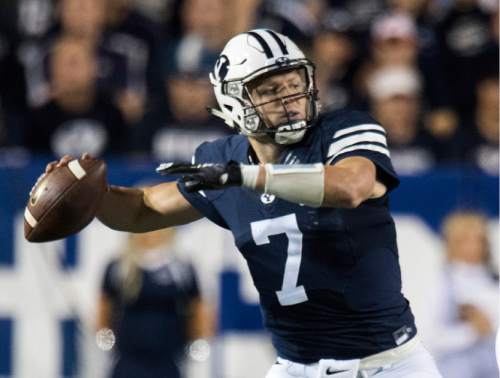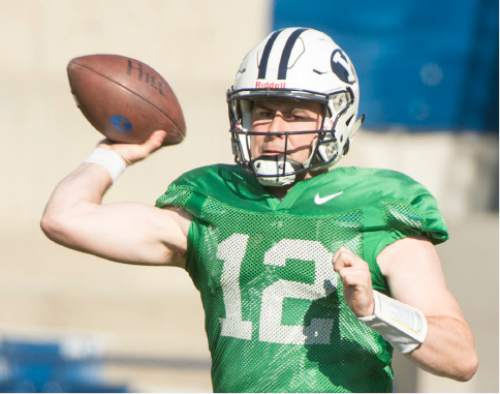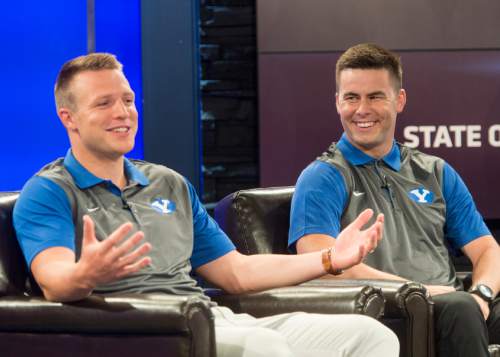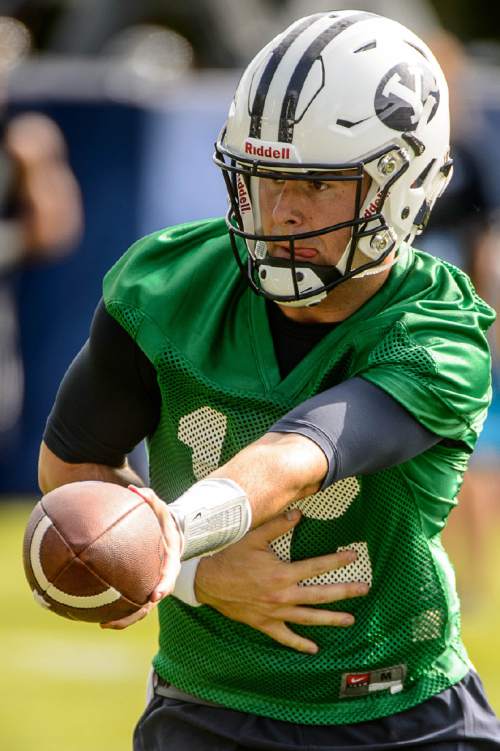This is an archived article that was published on sltrib.com in 2016, and information in the article may be outdated. It is provided only for personal research purposes and may not be reprinted.
Every season, I wonder why I mythologize the USC Trojans, giving them more credit than their actual performance deserves. And then the numbers hit me: 63-0, 48-14, 41-20, 48-6 and 56-7.
Those scores from the years when my father, Dave, took his Oregon State teams into almost-annual meetings with the Trojans, explain a lot. No wonder I build up USC so much in my mind.
Even in 1989, when he was voted the Pac-10 Coach of the Year and the Beavers beat the other three California schools in the league, OSU lost by 42 points to USC in Los Angeles. Now in his 80s, he jokes about seeing the white horse circle the Coliseum field after USC touchdowns in his dreams, and there's some trauma associated with the Trojans.
Yet that family history is also among the reasons I always look forward to watching USC play Utah, with the Trojans in town again Friday night. Once asked to name the best aspect of Utah's Pac-12 membership, former Ute basketball coach Jim Boylen said, "UCLA in the Huntsman Center."
Boylen was fired before the Utes began playing in the conference and the Bruins didn't come to Salt Lake City that first season, due to the Pac-12 scheduling rotation. Yet I understood his point, and I feel the same way about USC in football. Having the Trojans visit Rice-Eccles Stadium every other year is fun, and I can't imagine that novelty ever wearing off. I admire USC's tradition, even if the Trojans may be living off it too much lately.
Utah is only 1-4 vs. USC, but the Utes never have been in awe of the Trojans. Every game, going back to the Utes' Pac-12 debut at the Coliseum in September 2011, has been competitive into the fourth quarter. And the 2014 victory, featuring a fourth-down stop and a last-minute touchdown drive, is a signature moment in Utah's Pac-12 tenure. The Utes' next step is finishing ahead of USC in the standings and winning a South division championship. That can happen in 2016, starting Friday night.
BYU vs. West Virginia
Another instance of family scarring applies to BYU's offensive plight. In 2011, with my brother, Steve, as LSU's quarterbacks coach, I watched the Tigers produce possibly the best regular season in college football history and the worst performance ever in the national championship game.
For three quarters last week vs. UCLA, BYU's offense was almost as futile as LSU's effort vs. Alabama. In a 21-0 loss, LSU coach Les Miles stuck with his mobile quarterback, rather than go with a better passer. That's because the Tigers couldn't block anyone, and the other QB just would have been punished.
Same story in Provo, with Taysom Hill and Tanner Mangum. Hill's ability to escape the rush was BYU's only hope against the Bruins, even though the Cougars lost 17-14.
But here's one other lesson I learned from LSU's 2011 season: BYU shouldn't be afraid to play both quarterbacks. I understand the stigma associated with that strategy, but when two QBs have distinct talents, it can work. As long as Mangum is protected well — and the defenses of West Virginia and Toledo won't be like Utah's or UCLA's — he should get a chance to play, without actually benching Hill.
If it becomes clear at some point that one QB or the other is considerably better, then he should keep playing. But for now, why not try both guys?
Twitter: @tribkurt









